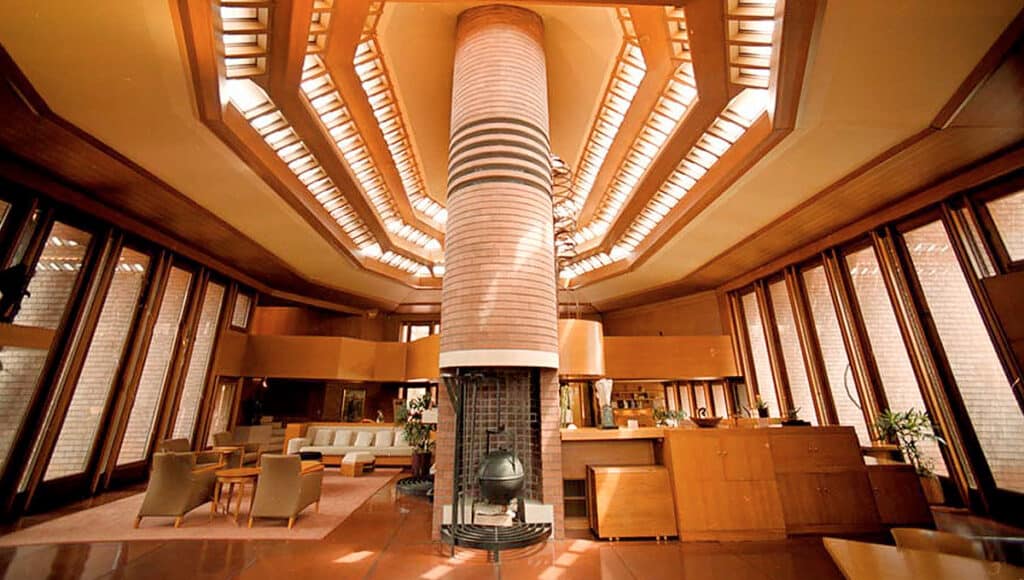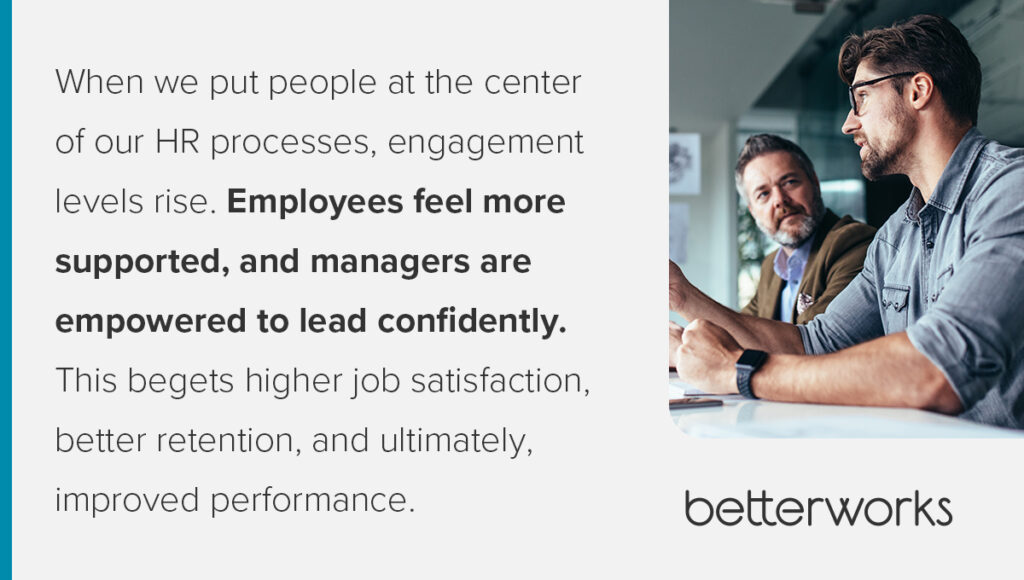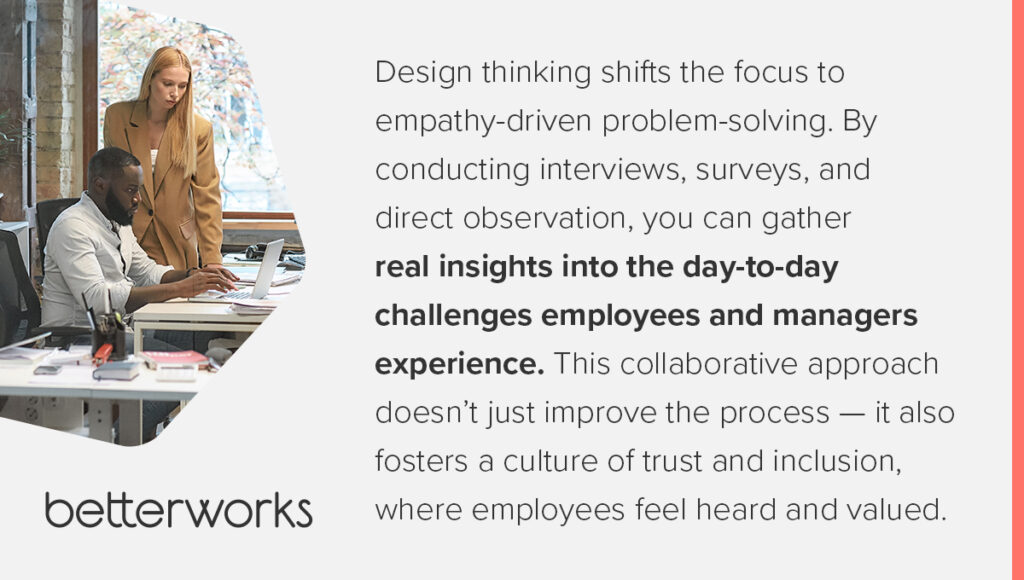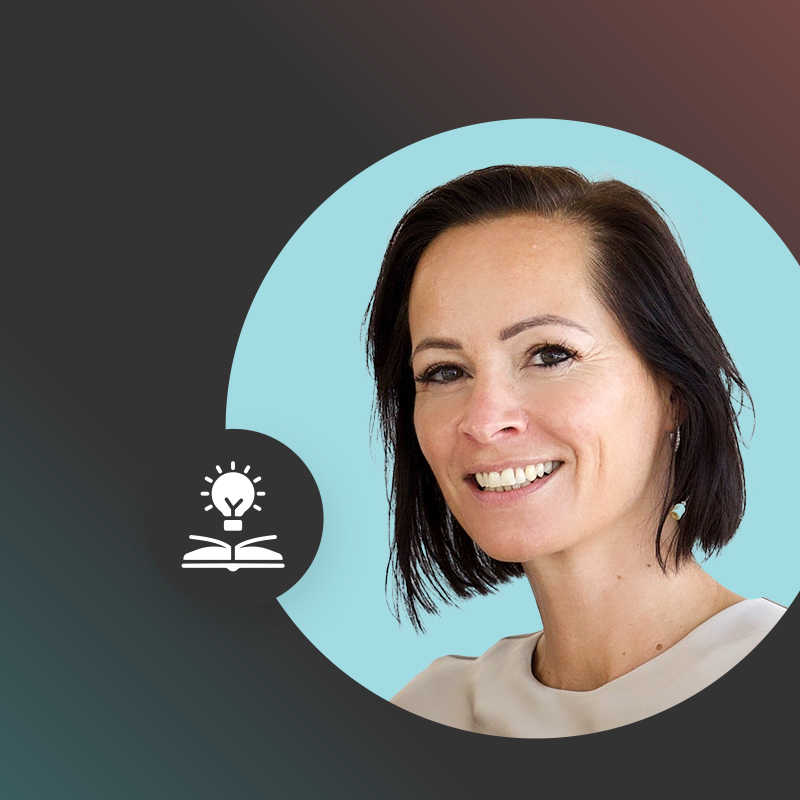Compare a Frank Lloyd Wright home to one built by a general contractor. Design thinking is Frank Lloyd Wright. It’s purposefully designed, not just common, utilitarian, and efficient as you might find in a tract home. A Wright house is experiential. Thought has been given to the play of light, the flow of the spaces, the elements of style, and the blending of the surrounding natural environment into the exterior and interior aesthetic. His houses are more than just houses.

Frank Lloyd Wright home. Credit: Alamy Stock Photo
Let’s transfer that analogy to what we often fall into in HR. HR processes often prioritize completion and compliance over the actual experiences of the people they impact. This creates a disconnect between what HR is trying to achieve and what employees and managers need to feel supported, valued, and motivated — affecting performance and, ultimately, your bottom line.
That’s why an empathetic, people-first approach has started to gain traction. In 2023, Deloitte coined the term “human sustainability,” which focuses on how the business can benefit its people rather than people benefiting the business. As of 2024, 76% of HR leaders recognize the importance of human sustainability, but only 10% are taking meaningful action to support it.
This is where design thinking for HR processes comes into play. Design thinking is a human-centered, collaborative approach to problem-solving. By putting people at the center of problem-solving, HR creates processes that are not only functional but also meaningful. This approach flips the script on traditional HR practices, challenging us to prioritize human experiences over rigid procedures.
The result? More engaged employees, innovative solutions, and processes that truly support both people and business goals. Let’s explore a few ways taking a human-centric, design thinking approach can revolutionize your impact on the business.
Human-centered solutions drive engagement
One of the biggest challenges HR leaders face is designing processes that truly engage employees and managers. Too often, HR procedures are made by HR professionals for HR professionals without thinking about the real experiences of the people who have to use them. The result is disengagement and frustration.
This is where design thinking’s human-centered approach makes all the difference. It pushes us to start by understanding the needs, pain points, and aspirations of the people our processes impact. When HR listens to employees and managers, we can design solutions that not only meet business goals but also resonate with the individuals they touch.

For example, let’s take the performance review process. Traditionally, this has been a top-down, once-a-year evaluation that often leaves employees feeling demoralized or disengaged. By applying design thinking, we can reimagine the process to focus on removing pain points and adding elements that folks actually appreciate – continuous feedback, aligning individual goals with organizational priorities, and giving managers the tools they need to support their teams effectively. Instead of the dreaded annual event, performance reviews become meaningful, ongoing, forward-thinking conversations that drive growth and development.
When we put people at the center of our HR processes, engagement levels rise. Employees feel more supported, and managers are empowered to lead confidently. This begets higher job satisfaction, better retention, and ultimately, improved performance.
Continuous innovation fuels organizational success
HR is not a static function. As workplace dynamics evolve, so too must our HR practices. Unfortunately, many HR processes remain stuck in the past, relying on outdated models and one-size-fits-all solutions. This lack of flexibility can stifle innovation and slow down an organization’s ability to adapt to changing business needs.
Design thinking offers a solution by embedding continuous innovation into the fabric of HR processes. Instead of seeing HR as a set of fixed procedures, design thinking encourages constant iteration and improvement. It’s about prototyping solutions, gathering feedback, and refining them based on real-world use.
Consider how this plays out in recruitment. Traditional recruitment processes often fail to capture the nuances of the candidate’s experience, focusing instead on ticking boxes for compliance or administrative ease. But what if we approached recruitment from a design thinking perspective? By engaging directly with candidates and understanding where they experience pain points — such as lengthy communication gaps or cumbersome application steps — we can redesign the process to be more candidate-centric, improving the experience for both the employer and the prospective employee.
This iterative mindset doesn’t just apply to recruitment. Whether it’s onboarding, performance management, or employee engagement, HR leaders can apply design thinking to prototype new solutions and continuously improve them.
Empathy and collaboration enhance problem-solving
One of design thinking’s greatest strengths is its emphasis on empathy and collaboration. Traditional HR processes are often designed around efficiency, but efficiency alone won’t solve the deeper challenges that employees and managers face. Without understanding their perspectives, HR solutions can miss the mark.
Design thinking shifts the focus to empathy-driven problem-solving. By conducting interviews, surveys, and direct observation, you can gather real insights into the day-to-day challenges employees and managers experience. This collaborative approach doesn’t just improve the process — it also fosters a culture of trust and inclusion, where employees feel heard and valued.

I’ve seen this play out firsthand. In one organization, we applied design thinking to the performance review process. Employees and managers had long complained about delays caused by a cumbersome approval workflow. By engaging with them and mapping out their experiences, we identified the bottleneck: an unnecessary approval step that didn’t add value. Once we removed it, the process became faster and less frustrating for everyone involved. More importantly, employees felt like their feedback had led to meaningful change, which significantly improved morale.
When we use empathy to understand our people’s experiences and collaborate on solutions, we can solve problems more effectively. The result is not only smoother processes but also a more positive organizational culture, where everyone is invested in the success of HR initiatives.
Want to learn more? Find out how to make the business case for HR transformation.


